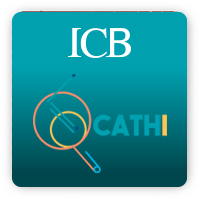Gastrointestinal metabolism of monomeric and polymeric polyphenols from mango (Mangifera indica L.) bagasse under simulated conditions
Mango bagasse (MB) is an agro-industrial by-product rich in bioactive polyphenols with potential application as a functional ingredient. This study aimed to delineate the metabolic fate of monomeric/polymeric MB polyphenols subjected to simulated gastrointestinal digestion. The main identified compo...
Uloženo v:
| Další autoři: | , , , , , , |
|---|---|
| Médium: | Artículo |
| Jazyk: | en_US |
| Vydáno: |
2021
|
| Témata: | |
| On-line přístup: | https://doi.org/10.1016/j.foodchem.2021.130528 https://www.sciencedirect.com/science/article/abs/pii/S030881462101534X |
| Tagy: |
Přidat tag
Žádné tagy, Buďte první, kdo otaguje tento záznam!
|
| Shrnutí: | Mango bagasse (MB) is an agro-industrial by-product rich in bioactive polyphenols with potential application as a functional ingredient. This study aimed to delineate the metabolic fate of monomeric/polymeric MB polyphenols subjected to simulated gastrointestinal digestion. The main identified compounds by LC/MS-TOF-ESI were phenolic acids [gallic acid (GA) and derivates, and chlorogenic acid], gallotannins and derivatives [di-GA (DA) and 3GG-to-8GG], benzophenones [galloylated maclurins (MGH, MDH)], flavonoids [Quercetin (Quer) and (QuerH)] and xanthones [mangiferin isomers]. The bioaccessibility depended on the polyphenols’ structure, being Quer, 5G to 8G the main drivers. The results suggested that the gastrointestinal fate of MB polyphenols is mainly governed by benzophenones and gallotannins degalloylation and spontaneous xanthone isomerization in vitro to sustain GA bioaccessibility. |
|---|
